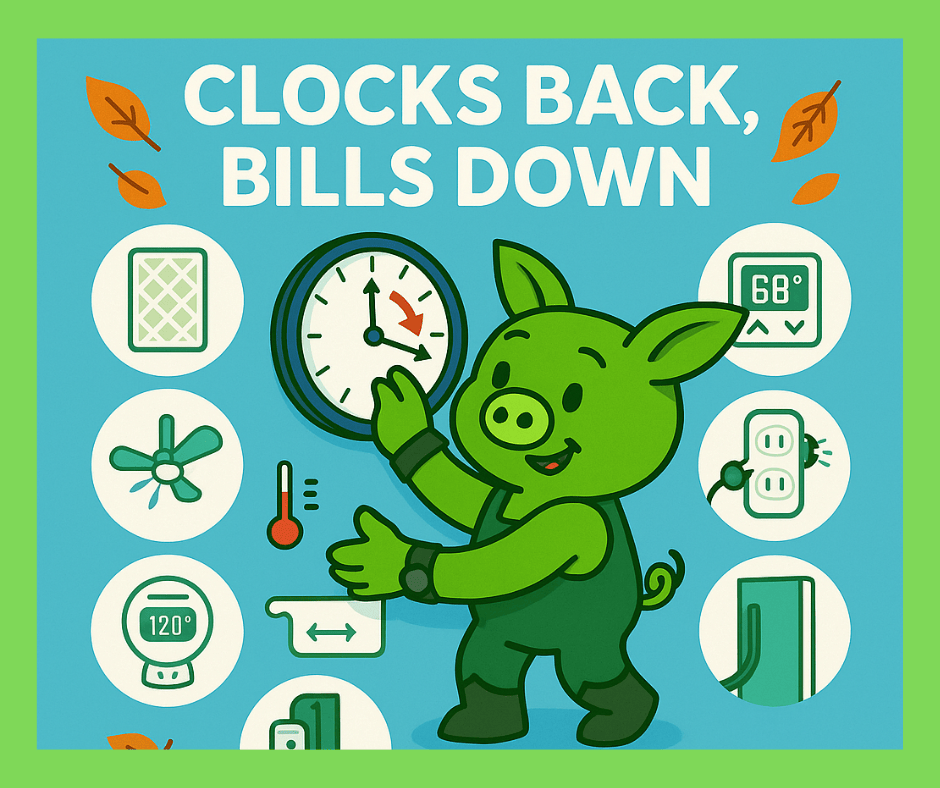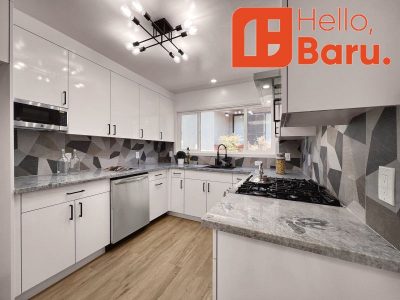
November 3, 2025 | Sustainable Home Tips
Planning a kitchen remodel? Learn how to design a sustainable, energy-efficient kitchen that’s beautiful, budget-friendly, and built for the future.

Image by Baru Custom Cabinets
Thinking about remodeling your kitchen? Before you dive into Pinterest boards and appliance sales, here’s the big question:
Are you building for today—or for the next 10, 20, 50 years?
A kitchen remodel is one of the best investments you can make—but it’s also one of the biggest sources of waste, emissions, and missed opportunities if you’re not careful.
Good news: You don’t need to spend a fortune (or go full granola) to design a kitchen that’s stylish, sustainable, and built to last.
This guide covers everything you need to:
Let’s cook up something smarter. 🍴🌱
The biggest green upgrade you can make? Design for efficiency first.
✅ Smart Layout Tips:
📎 More Resources: National Kitchen and Bath Association (NKBA) Kitchen Planning Guidelines
Pigybak Tip: Post your project early on Pigybak. A smart contractor can help tweak layouts for energy efficiency, not just looks.
Skip the “fast fashion” of kitchen design. Choose materials that are sustainable, durable, and timeless.
🌿 Eco-Friendly Choices:
💡 Pro Tip: Vintage salvage stores often have high-quality cabinets and counters at a fraction of the cost. If you’ve got a unique space with unique requirements, you can also go customer with a fraction of the cost, delivered right to your door. Our partner, Baru, has uberized custom cabinets – making them greener, affordable, but totally high end. Check out their online design tool to mock up your space!
📎 More Resources: Green Building Supply Guide
Appliances account for nearly 30% of home energy use. Picking the right ones can slash your bills (and your footprint).
✅ Appliance Checklist:
🔌 Smarter Small Appliances: Air fryers, slow cookers, and Instant Pots use far less energy than ovens for everyday cooking.
📎 More Resources: ENERGY STAR Kitchen Appliance Guide
Pigybak Tip: Bundle appliance installation with other contractor work using Pigybak—better scheduling, better group deals.
The EPA estimates that renovation and demolition projects generate over 500 million tons of waste annually. Don’t add to the pile.
♻️ How to Renovate Responsibly:
📎 More Resources: EPA Sustainable Materials Management
Good lighting isn’t just about looks—it’s a major energy player.
💡 Eco Lighting Tips:
Kitchen remodels often forget water, but it’s a huge area for impact.
🚰 Water-Saving Upgrades:
📎 More Resources: EPA WaterSense Products
If you’re remodeling your kitchen sustainably, why stop there?
Pigybak Tip: Post a bundle project—kitchen + insulation + HVAC upgrade. Contractors love combined jobs, and you’ll usually score a deal.
Divide, Multiply, and Swap: Host a Neighborhood Plant Party
Remodeling your kitchen is a big move. Doing it green is a smarter one.
Plan it right. Source it sustainably. Build it better.
And when it’s time to call in backup? Pigybak has your back. Post your project, invite neighbors for group deals, and upgrade smarter (without the stress).
📲 Start Your Pigybak Ride Today
I, [Customer Name], hereby authorize Pigybak to include my name, phone number, and address in their database. I also opt-in to receive notifications about upcoming services in my area. I validate that the information provided is accurate and represents my personal information, not others.
By providing this authorization, I understand and agree to the following terms:
I authorize Pigybak to set up a profile on my behalf, which may include my name, phone number, and address.
I consent to receiving notifications from Pigybak about upcoming services in my area via text message.
I acknowledge that I have the option to opt out of receiving notifications at any time. I can do so by directly contacting the contractor or managing my preferences in the Pigybak app.
I authorize Pigybak to share my contact information with the contracted service providers for the purpose of facilitating service delivery.
Pigybak agrees not to share my information with third parties without obtaining separate authorization from me.
I understand that Pigybak may update the terms and conditions, and I agree to review them periodically for any changes.
I acknowledge that the standard terms and conditions of the Pigybak mobile application, which can be found at www.pigybak.com/privacy-policy, apply to this authorization.
I acknowledge that this authorization is voluntary, and I have read and understood the terms outlined above. By providing my information, I consent to the terms above.

